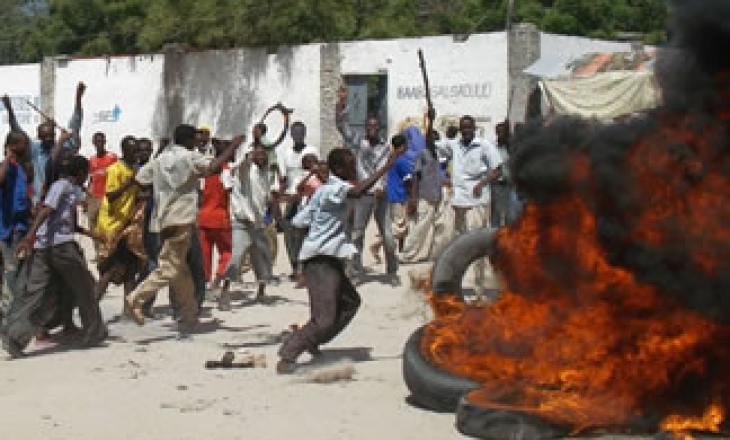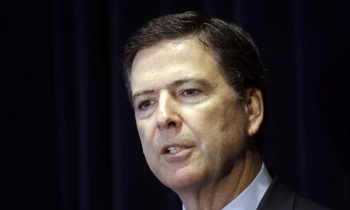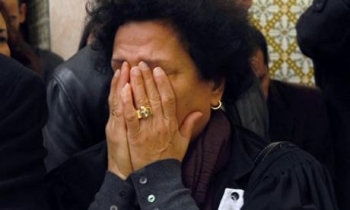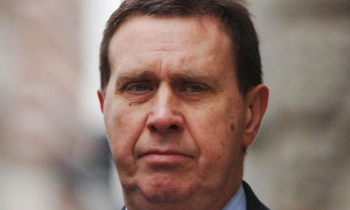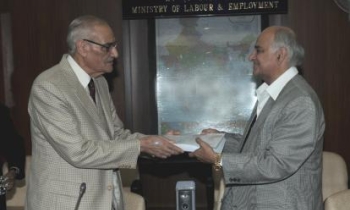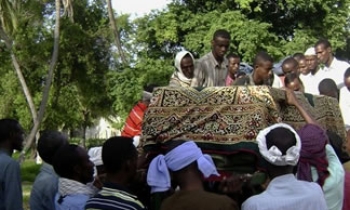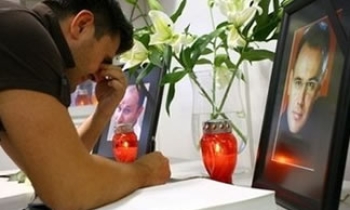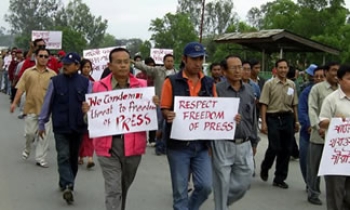The life and livelihood of Somali journalists were in danger, and attacks to kill, hurt, harass and silence journalists were persistent throughout 2008.
The 2008 annual report of the the National Union of Somali Journalists (NUSOJ) reveals virulent attacks on journalists including unspeakable cases of killings, arrests, injuries, ill-treatments, abduction and death threats as well as serious, sophisticated and systematic harassment and intimidation in main cities, particularly Mogadishu, Kismayo, Baidoa, Bossasso, Galkayo and Hargeisa. Privately-owned media houses were also severely repressed.
NUSOJ's report, 'Somalia: A Precarious and Perilous Place for the Press', says that freedom of the media remained at the mercy of the Transitional Government (TFG), Islamic insurgents, the Puntland Administration, and Somaliland authorities who had frequently shown their antagonism to independent journalism.
Across Somalia, violence, attacks, impunity and injustice against journalists and media remained widespread and systematic, and involved a variety of perpetrators. All perpetrators of crimes against journalists continued to evade justice.
“Journalists were deliberately targetted as they tried to report on the plight of the people, to independently inform the public on current issues and expose serious human rights violations. Journalists and media houses that are vocal and critical of the warring sides in an independent and professional manner are constantly targeted," says NUSOJ Secretary-General Omar Faruk Osman.
The NUSOJ annual report also documents a number of disturbing trends that became increasingly apparent in 2008. Oppressive practices against journalists intensified and diversified during the year. Killings and other threats to journalists and media freedom had been very serious. Even though there was a decrease in killings of journalists in Somalia compared to 2007, there were many failed attempts to kill journalists.
Southern Somalia remains the most dangerous area for independent journalism. Two journalists were murdered with impunity in Kismayo. The murder of NUSOJ Vice-President Nasteh Dahir Farah shocked journalists and the wider Somali society and caused dreadful grief to his family and colleagues.
The situation was no better in Puntland, the northeast regions of Somalia, as the administration prepares for presidential and parliamentary elections. The deteriorating security situation in Bossasso, Galkayo and Garowe has made intimidation, harassment and violence an everyday reality for media professionals working in Puntland. Some Puntland ministers regard journalists as an irritation.
"Somaliland is one of the most egregious violators of press freedom as journalists have also come under attack in its bid to secure international recognition for its self-declared independence from Somalia. Harassment against independent journalists is continuing in Hargeisa, Barbara and Borame," says Omar Faruk.
The annual report details 30 journalists and media staff who were arrested and all but one released without trial. More than 30 journalists received death threats. In many cases threats have been carried out by gangsters, apparently acting with the consent of politicians.
Insurgent forces placed restrictions on the activities of journalists, telling them their lives would be at risk if they covered anything they do not want reported. Thus, many important stories about insurgent activities in the country remain uninvestigated and go unreported by the media.
Since Islamic insurgents took over several towns in south-central regions of the country, six journalists fled to Kenya from Kismayo in fear for their lives. They received death threats after being labelled as collaborators with the previous pro-TFG administration. Apart from death threats, media in Gedo and the lower Jubba regions were banned from broadcasting music or songs, saying it was prohibited by the "Islamic religion".
Despite optimism that the government of Prime Minister Nur Hassan Hussein would lead to an improvement in respect for the right to freedom of expression, the situation continues to worsen in almost all categories of press freedom. Journalists in Baidoa, Mogadishu and Kismayo who voiced concern or criticise the government and insurgent forces are intimidated into silence, killed, arrested or forced into self-censorship.
The increasingly vociferous war of words between the two factions of the Alliance of Reliberation of Somalia (ARS) increased the danger for journalists. Media professionals live in constant fear of being killed for reporting on the ARS's continuing internal crisis and over who to refer to as the legitimate leadership of the group.
The media community continues to be a casualty of a merciless war. Violations of the social and economic rights of journalists undermines their rights to the enjoyment of just and favourable work conditions. The war that escalated in December 2006 in southern Somalia also worsened living conditions for journalists as media houses are not able to pay salaries since they hardly create income.
The media law that was passed in December 2007 was not fundamentally reviewed before it was implemented. The law introduced manifold restrictions aiming at controlling and paralysing the privately-owned media. It also set strict conditions for registration and facilitates broad interference by the ministry of information in media matters. The law imposed draconian restrictions on the right to media freedom and freedom of expression, and put the composition, operations and independence of the National Media Council firmly under government control.
Some media houses restrict the ability of journalists to provide independent, fair, balanced and honest news and information. The editorial pressure on journalists forces some of them to twist, hype and report things they know are false because their media owner(s) wants it that way. Media houses in Mogadishu and Baidoa, owned, openly or secretly, by politicians brought in restrictions on journalists, particularly in the form of editorial pressure and interference.
Press freedom was further undermined by media workers’ poor social conditions. More than 95 per cent of media workers were employed orally instead of written contract of employment. Workers did not earn fair wages and equal remuneration for work of equal value. Most salaries were between $18 and $50. This was insufficient for a decent living standard for themselves and their families, because the minimum amount an average family can live for a month is $100. But fewer than 2 per cent of media employees were paid $100.
Working conditions for women were inferior to those enjoyed by men doing equal work or they were prevented from doing the same work as the men. Violence against women journalists was found pervasive in Somalia, but many female journalists declined to report. Leisure time, relaxation, limitations on working hours, overtime and paid holidays were also completely unfamiliar in Somalia. Media employees did not get equal opportunities of promotion, because the current criteria was based on how close the employee was to the media boss or whether he was of the same clan or sub-clan as the media owner, instead of being based on seniority and competence. Young unskilled journalists were employed regularly since they don’t require payment. Employers also did not provide health and safety assistance for employees even while on assignment.

